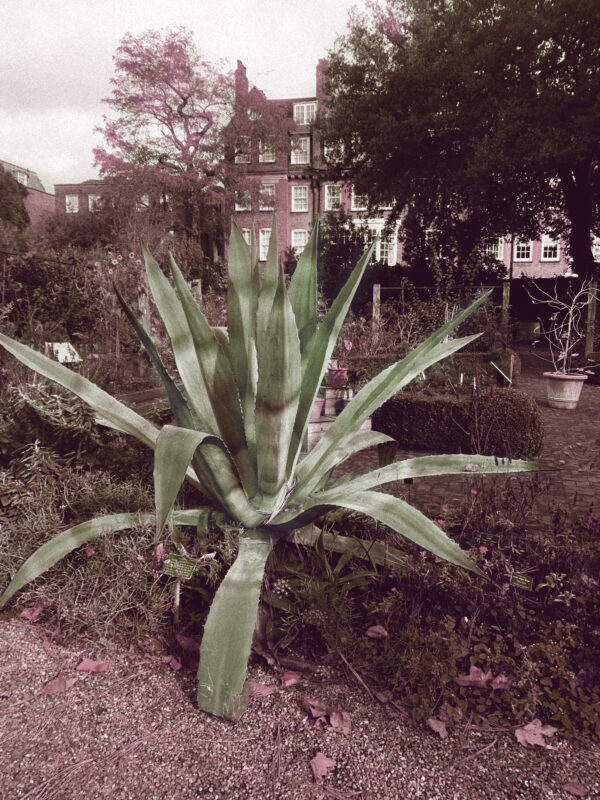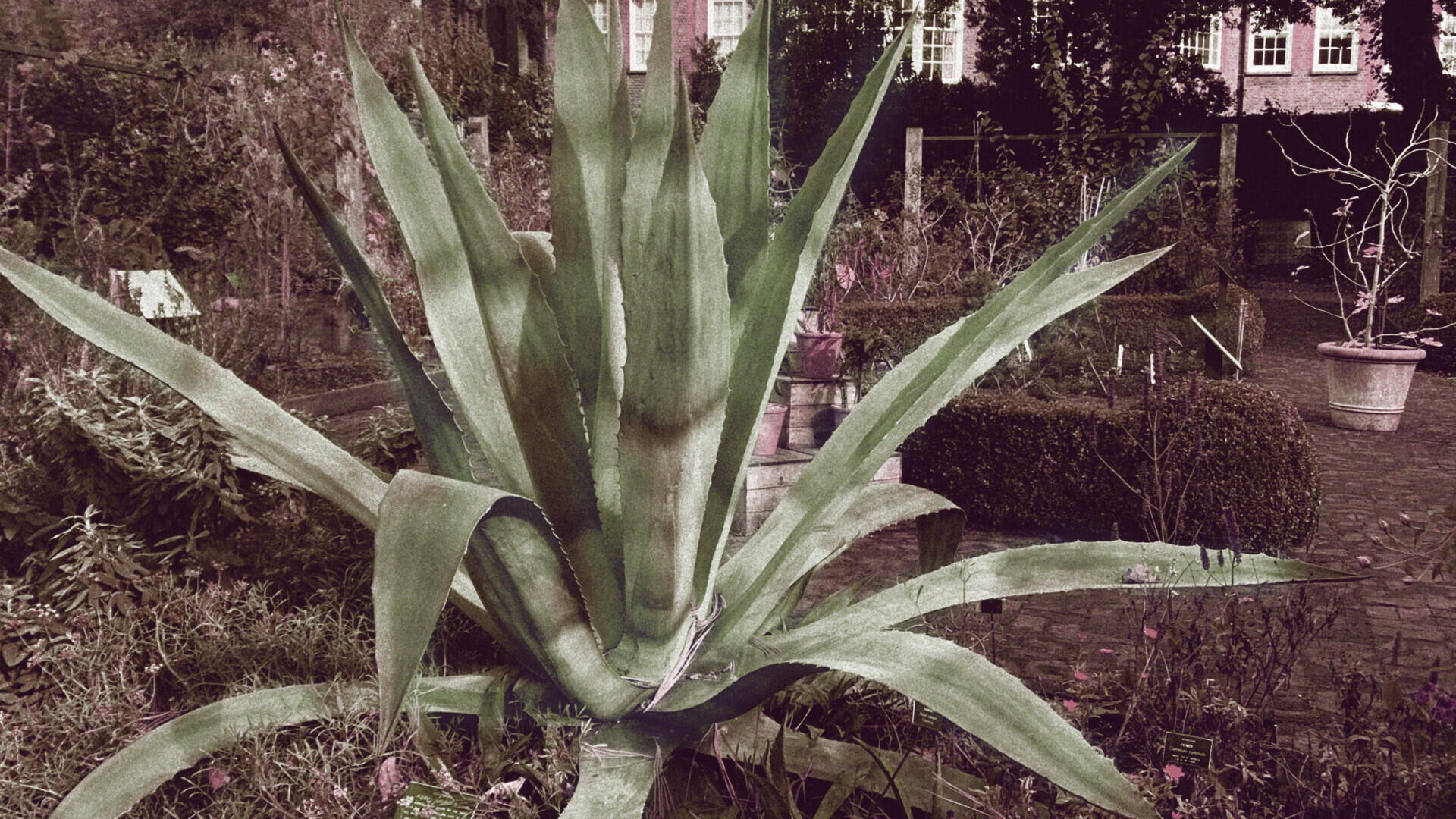Family: Asparagaceae
Scientific Name: Agave americana
Common Name: Maguey
Origin: Arizona, Mexico, Texas
We label this plant Agave americana, but to many of the indigenous people of Central America where this plant is from it is called maguey. It is a succulent, which means it stores water in its leaves. It is in the Asparagaceae family and is related to asparagus. It can live to be up to 80 years and grow up to 1.8 metres tall.
Maguey is a monocarpic plant, which means it blooms only once in its lifetime. It can reproduce both asexually and sexually. Its sexual reproduction cycle lasts for many years during which it builds up energy without flowering each year. When it is ready the plant releases hormones and sends up an impressive flower spike. This spike can be up to 8 metres tall. On the spike, clusters of flowers start to open. The flowers are pollinated by bats, moths, hummingbirds, and bees. After it reproduces, the main plant dies.
In addition to reproducing sexually it can also reproduce asexually through offshoots. Over its lifetime the agave can sprout small plantlets that are clones of the parent plant around its base. You can often find smaller agave around a mature plant on the earth nearby it.
Maguey is an important natural resource as the leaves contain long strong fibres used to create textiles, ropes and paper. Fermented pulp from the plant can also be used to make the alcoholic drink, pulque. Traces of pulp have been identified in ceramic drinking vessels used by the Teotihuacan peoples from 150 BCE.
Audio version read by Queer Botany founder, Sixto-Juan Zavala:


